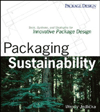Cannabis Packaging
True Sustainability in Cannabis Packaging is still out of Reach
As the cannabis market grows, so does its packaging needs, but a mixed bag of focus and state laws make industry-wide sustainability difficult.






Increased legalization and a growing demand for medical and recreational cannabis across the world has the legal marijuana market size expecting to reach $73.6 billion by 2027, says a new report published by Grand View Research, Inc. The benefits and opportunities offered by this global industry are profound, and according to Global Cannabis Market Prediction, the demand for a sophisticated cannabis packaging industry has begun to take precedence.
The U.S. has yet to legalize cannabis on a national level, but strict childproof packaging regulations have been attached to cannabis, inadvertently producing excessive packaging standards. A joint report by BDS Analytics and Arcview Market Research confirms U.S. companies sold $8.5 billion worth of cannabis products in 2018.These products tend to come in plastic packaging, which is the most affordable material to meet these federal requirements, and can range from four to 30 times the weight of the products they contain.
Consumers accustomed to simple black market “dime bags” are now faced with various forms of cannabis, including capsules, lozenges, tinctures, creams, salves, balms, dermal patches, oral or dermal sprays, edibles, and vaporizing or smoking dried buds. Many are wondering if the packaging, including jars, bottles, bags, pouches, tubes and metal tins, are actually recyclable.
Processors, packagers and contractors face challenges regarding a wide variety of packaging options, not to mention designing, upgrading and automating processes and machines that are specific to cannabis. With so much focus on compliant packaging, labeling and automation, cannabis packaging has garnered little interest in its long-term effects on environmental sustainability. “The historical cannabis community is environmentalist, but green rushers” — as some cannabis entrepreneurs are known — “aren’t, necessarily,” says Danielle Rosellison, president of the Cannabis Alliance, a nonprofit group of cannabis stakeholders dedicated to sustainability.
But much like the CPG industry, some companies manufacturing cannabis products are searching for recyclable materials that address the consumer’s desire for sustainable packaging. A Nielsen report found that 73% of Millennials are willing to pay more for sustainable goods. Forbes notes that 62% of Generation Z prefers to buy from sustainable brands, with 54% willing to spend 10% more on sustainable products, and 50% of Millennials saying the same. The New York University Center for Sustainable Business (CSB) found that 50% of sales growth among CPGs between 2013 and 2018 came from products marketed as sustainable, despite the fact that such goods account for fewer than 17% of the market. CSB Director Tensie Whelan says, "Across virtually every category of consumer packaged goods, sustainability is where the growth is, which I think tells you something about where consumers are...if you look at our data there is a massive shift in the last five years."
Sustainability awareness has inspired local recycling programs that offer customer rewards, incentives for producers and processors to transition to sustainable and recyclable containers made from alternative plastics and the creation of nonprofits like Cannabis Alliance, an association who says its dedicated to the advancement of a vital, ethical and sustainable cannabis industry. Some cannabis packaging groups would like to see single-use plastic eliminated from the industry, replaced by biodegradable materials, hemp and other compostable options.
TerraCycle, a waste management company operating across 21 countries including the U.S., has had success by partnering with Tweed, a Canadian cannabis brand, to deliver the free Cannabis Packaging Recycling Program, which claims to have saved more than 165,000 containers from landfills since October 2018. Recyclable items include inner and outer plastic packaging, tins, joint tubes, plastic bottles, plastic caps and flexible plastic bags, along with all Canopy Growth produced vape cartridges and batteries. Collected products are turned into plastic pellets and precious metals from which brand-new products can be created. The program even goes as far as sending shipping labels for consumers to mail their packages. Programs such as this could enter into the U.S. cannabis industry after legalization.
Still, state laws make it difficult for companies to reduce packaging waste, such as one in Washington State that requires every cannabis product to be individually wrapped. Other laws require that self-serving packages of edibles and concentrates must have self-contained servings, and bottles with liquid products must provide serving cups, such as those found with cough syrup. Los Angeles mandates that so-called “exit bags” for edibles be made of unrecyclable PET film.
Even if consumers consciously recycle their cannabis packaging, most of it is not acceptable. “We have all these materials coming online that are not recyclable, and they’re causing contamination in the recycling system,” says Heather Trim, executive director of Zero Waste Washington.
Signs of progress regarding sustainable packaging and environmental awareness do appear to be growing within the cannabis industry, and there is space for innovation and experimentation. Starting in January 2020, Colorado began a take-back program for cannabis packaging, vape cartridges and other plastics that go out the door with customers. With Canada as an example of a lack of foresight regarding container designs that are simpler to recycle, the U.S. has an opportunity in its future to mandate country-wide that cannabis packaging be sustainable and recyclable from the beginning of legalization. As the cannabis industry continues to reach new heights, it still appears possible for it to attain an environmentally friendly status.
Looking for a reprint of this article?
From high-res PDFs to custom plaques, order your copy today!










